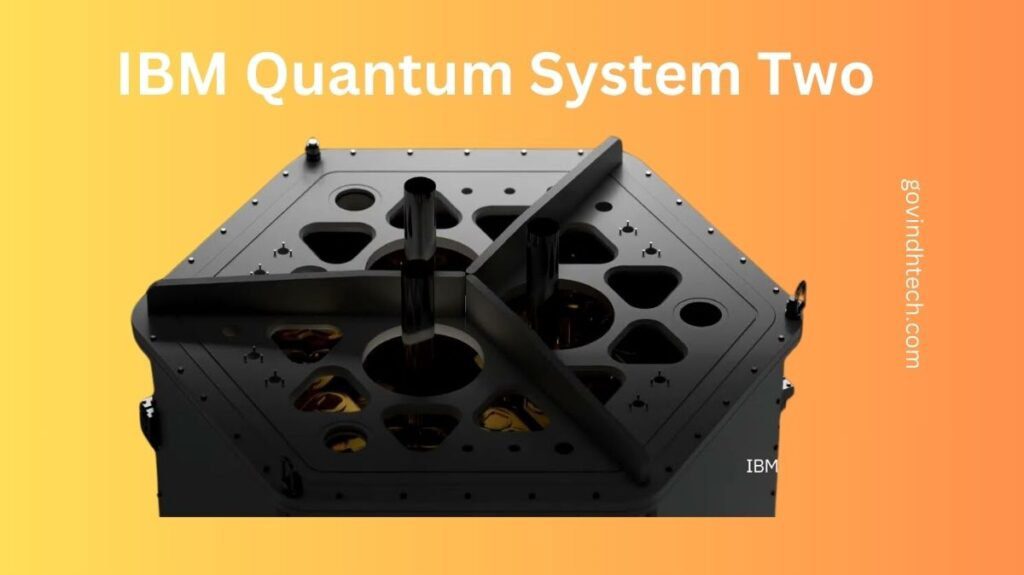IBM Quantum Heron Processor
The first of a new series of utility-scale quantum processors, IBM Quantum Heron, was unveiled right now at the annual IBM Quantum Summit in New York. Its architecture has been developed over the last four years to deliver IBM’s highest performance metrics and lowest error rates of any IBM Quantum processor to date.
Additionally, IBM debuted IBM Quantum System Two, the first modular quantum computer made by the firm and the main component of their quantum-centric supercomputing architecture. With three IBM Heron processor and accompanying control electronics, the first IBM Quantum System Two, situated in Yorktown Heights, New York, has started up operations.
Now that this crucial framework is in place, the company is extending its IBM Quantum Development Roadmap until 2033 with new goals to greatly improve the quality of gate operations, in addition to other advances in quantum hardware, theory, and software. By doing this, it would be possible to run quantum circuits of greater size and contribute to the full realization of quantum computing’s promise at scale.
IBM Quantum systems can now be used as a scientific tool to examine utility-scale classes of issues in chemistry, physics, and materials beyond brute force classical simulation of quantum mechanics, as proven by IBM earlier this year on a 127-qubit ‘IBM Quantum Eagle’ processor.
Since then, utility-scale quantum computing has been demonstrated more often by eminent scientists, engineers, and researchers from a variety of institutions, including IBM, the U.S. Department of Energy’s Argonne National Laboratory, the University of Tokyo, the University of Washington, the University of Cologne, Harvard University, Qedma, Algorithmiq, UC Berkeley, Q-CTRL, Fundacion Ikerbasque, Donostia International Physics Center, and the University of the Basque Country.

This includes trials currently underway on the brand-new IBM Quantum Heron 133-qubit processor, which the company is currently offering to consumers through the cloud. The first of IBM’s new generation of high-performance processors, IBM Heron offers a five-fold gain over the previous best records set by IBM Eagle, thanks to dramatically improved error rates. Over the course of the next year, more IBM Heron processors will be added to IBM’s fleet of systems, which leads the industry in terms of utility and performance.
The Extended IBM Quantum Development Roadmap and IBM Quantum System Two
The architecture of IBM’s next-generation quantum computing system is built on IBM Quantum System Two. It integrates modular qubit control circuits with traditional runtime servers and scalable cryogenic infrastructure. The new system serves as a foundational element for IBM’s quantum-centric supercomputing concept. This architecture uses a middleware layer to properly integrate quantum and classical workflows. It integrates quantum communication and processing with the help of classical computer resources.

This system is intended to contain IBM’s next generation of quantum processors as well, according to IBM’s recently enlarged ten-year IBM Quantum Development Roadmap. Furthermore, as part of this roadmap, these upcoming processors are meant to progressively enhance the caliber of operations they can perform, hence greatly increasing the complexity and volume of workloads they can manage.
Enhance the Simplicity of Quantum Software Programming with Qiskit and Generative AI
IBM is also presenting plans today for a new generation of its software stack, of which Qiskit 1.0 will be a turning point characterized by speed and stability. IBM is also introducing Qiskit Patterns, which aims to democratize the development of quantum computers.
Quantum developers will be able to write code more quickly and simply with the help of Qiskit Patterns. Its foundation is a set of tools for mapping classical issues to quantum circuits, optimizing those circuits with Qiskit, running those circuits with Qiskit Runtime, and postprocessing the output. Users will be able to create, implement, and run workflows mixing classical and quantum processing in various contexts, such as cloud or on-premise situations, by combining Qiskit Patterns with Quantum Serverless. With the help of these tools, users will be able to construct and execute quantum algorithms more quickly.
Furthermore, IBM is in the forefront of applying generative AI to quantum code programming via its enterprise AI platform, Watsonx. IBM plans to include Watsonx’s generative AI technology to facilitate the automation of Qiskit’s quantum code development. The IBM Granite model series will be adjusted in order to accomplish this.
“Generative AI and quantum computing are both reaching an inflection point, presenting us with the opportunity to use the trusted foundation model framework of watsonx to simplify how quantum algorithms can be built for utility-scale exploration,” stated Jay Gambetta, Vice President and Fellow at the company. “This is a significant step towards broadening how quantum computing can be accessed and put in the hands of users as an instrument for scientific exploration.”
Users and computational scientists can now reliably derive results from quantum systems as they map larger and more complex problems to quantum circuits thanks to the sophisticated hardware found in IBM’s global fleet of more than 100 qubit systems and the user-friendly software that IBM is introducing with Qiskit.


[…] advances and more complex cyberattacks drive cryptography to evolve. Quantum cryptography, or quantum encryption, uses quantum physics’ natural and immutable laws to […]
[…] Quantum, post-quantum, and future encryption […]
[…] the MAG 341 CQP QD-OLED utilizes is the device’s most important component. Through the use of Quantum Dot technology in conjunction with an OLED screen, MSI has accomplished an extraordinary degree of […]
[…] been an IBM Quantum Innovation Center since 2022. Furthermore, by 2028, IBM and KQC want to have an IBM Quantum System Two installed on-site at Korea Quantum Computing (KQC) in Busan, South […]